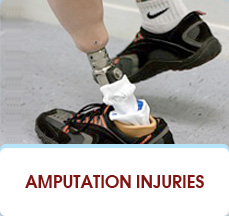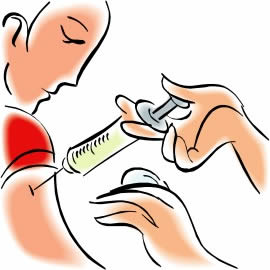Kinds of Physical Disabilities
There are various kinds of Physical Disabilities
Contents
Disability due to Multiple Sclerosis
The disease
Multiple sclerosis (MS) is a disease in which there is degeneration of the nerves of the central nervous system (brain and spinal cord).There is slowing down of the electrical impulses that travel along the nerves. In addition, the nerves also get damaged. A person faces problems with functions that are controlled by the nervous system such as vision, speech, walking, writing, and memory.
Symptoms
Visual disturbances like patch of blurred vision, red-to-orange or red-to-gray distortions (color desaturation),loss of vision in one eye or pain in the eye. Limb weakness Attention deficit Muscle spasms, fatigue, numbness, and prickling pain. Difficulty in judgement Sometimes loss of sensation, speech impediment, tremors, or dizziness. Some degree of memory loss Depression Sexual dysfunction and bladder control problems
Treatment
Medications can help ease MS attacks and possibly slow the disease.Sometimes surgical methods are also used. Physical therapy and other treatments help control symptoms -- and improve the quality of life.Alternative therapy includes a variety of disciplines that range from diet and exercise to mental conditioning to lifestyle changes. Examples inclusion of acupuncture, yoga, aromatherapy, relaxation, herbal remedies, and massage.
Management
With pain and difficulty in movement, one may feel it a too heavier load to bear.The patient needs to manage the life style to cope up with the problem. The patient needs to learn to manage stress and maintain a positive physical, emotional and spiritual attitude towards life.A counselor can help the patient in that by designing strategies to gain a sense of control over life and thus improving the quality of life.. One needs to take care of oneself. Healthy , exercise, de-stressing techniques can help along with enough rest. One needs to consider life-planning issues, such as finances, work, adapting of home, and other practical issues. One needs to be proactive in health and educated.
Disability due to Polio
Three types of viruses cause Poliomyelitis (Polio).It is a highly contagious disease. It can be transmitted from person to person contact. The virus enters through mouth and nose and multiplies in the intestinal tract. It moves inside the blood stream and can also be transported by the lymphatic system. The entire body is attacked and severe damage is is caused to the nervous system. It can result in paralysis of muscles.
Symptoms:
There are 3 kinds of infection:
1.Sub clinical Infection
General discomfort or uneasiness (malaise)
· Headache . Red throat . Slight fever · Sore throat · Vomiting
People with subclinical polio infection might not show symptoms, or may last 72 hours or less.
Central nervous system i.e. brain and spinal cord may be affected by Clinical poliomyelitis and is divided into nonparalytic and paralytic forms.
2.Non Paralytic Poliomyelitis
·Back pain or backache
·Diarrhea
·Excessive tiredness, fatigue
·Headache
·Irritability
·Leg pain (calf muscles)
·Moderate fever
·Muscle stiffness
·Muscle tenderness and spasm in any area of the body
· Neck pain and stiffness
· Pain in front part of neck
· Pain or stiffness of the back, arms, legs, abdomen
· Skin rash or lesion with pain
· Vomiting
Symptoms usually last for 1 - 2 weeks.
3.Paralytic Poliomyelitis
·Fever 5 - 7 days before other symptoms
·Abnormal sensations in an area
·Bloated feeling in abdomen
·Breathing difficulty
·Constipation
·Difficulty beginning to urinate
·Drooling
·Headache
·Irritability or poor temper control
·Muscle contractions or muscle spasms in the calf, neck, or back
· Muscle weakness, asymmetrical (only on one side or worse on one side)
o Comes on quickly
o Location depends on where the spinal cord is affected
o Worsens into paralysis
· Sensitivity to touch; mild touch may be painful
· Stiff neck and back
. Swallowing difficulty
Treatment and Rehabilitation
There is no medical cure but it can be prevented by an effective vaccine. Supportive treatment is given to person. It includes Bed rest, lots of fluids, heating pads, and analgesics may be recommended for muscle pain. Insertion of breathing tube can required if there is paralysis of the respiratory muscles in order to open up the windpipe. Catheterization may be needed in case of abnormal bladder function. Muscle damage can be prevented by physical therapy. It also helps in retaining muscle function. Many times braces or corrective shoes, or orthopaedic surgery is required to help recover muscle strength and function. To improve functional ability of polio patents, occupational therapy can also prove to be useful. A counsellor’s knowledge and understanding of the individual's chronic illness can prove to be useful in order to promote successful vocational assessment and placement.
Disability due to Muscular Dystrophy
Disability due to Amputation
Sometimes it may be necessary to remove a limb or a part of limb from the body because of peripheral vascular disease, malignant disease, injury (trauma), or congenital deformity. In elderly people gangrene of part of the lower limb can be the reason behind amputation. Congenital absence of limbs or parts of limbs may have much the same effect as amputation.
After amputation one needs to use an artificial limb, or part of a limb, is known as prosthesis. It may be functional or cosmetic like many of those used in upper limbs. Their effectiveness depends on the level of amputation. Mobility will not be much affected but there can balance problems.
Complications after amputation
There can swelling (oedema) of the stump, infection, friction which may lead to blisters and sore areas, or skin problems. Bony spurs or of bone and painful nerve swellings may be there.
The person may feel that the lost limb is still there (phantom sensation) and occasionally this may be painful (phantom pain). There may be problems in other areas such as the back or the remaining limb. There can be onset of arthritis because of dependence on the remaining limb. Walking may be fatiguing, and the quality of walking will be less than that of a person whose amputation is at a lower level.
Balance problems may occur with amputation at any level, even the toes, especially the great toes.
There can twisting of the spine (scoliosis) causing chronic back pain and balance problems.
Rehabilitation
Once the wound is healed the person is given prosthesis and is trained to walk with the help of aids such as a stick or walking frame.
Achievement of functional level would depend on the age, physical and mental fitness of the person; their motivation; the level of amputation and construction of the stump; and the availability of rehabilitation programmes. Rehabilitation cab be delayed due to obesity. Some people with above knee amputation may have to depend on wheelchairs.
Treating Pain after Amputation
The pain after amputation is quite complicated and can be very difficult to treat.
Appropriate for pain management include but not limited to :
1. Proper fitting of prosthesis
2. Physical therapy, exercises, transcutaneous electrical nerve stimulation (TENS) units and related treatments
3. Techniques of relaxation and stress management
4. Therapies including biofeedback, cognitive and behavior
5. Medications that are Non-steroidal anti-inflammatory(NSAIDs)
6. Sometimes there is use antidepressants and neuroleptic agents
7. Oral opiod analgesics
8. Muscle relaxants


